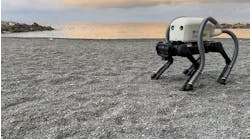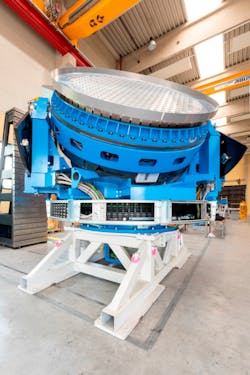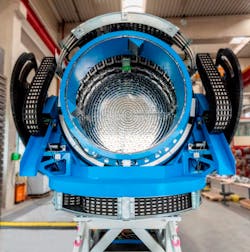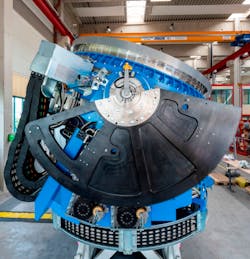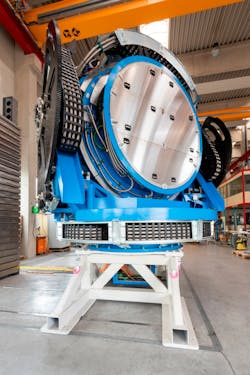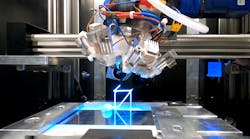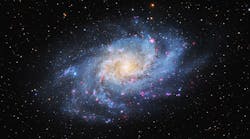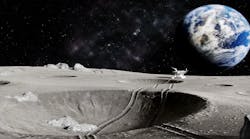In mid-November 2021, few people on Earth even heard about a very serious situation in the skies overhead. But for the astronauts on the International Space Station (ISS)—and the Earth-bound scientists charged with keeping them safe—the drama was all too hard to ignore.
On November 14, the crew of the ISS got a sudden message to perform “safe haven operations”. In this scenario, astronauts prepare for the possibility of a collision so severe that they would need to use the station’s capsules as “lifeboats.”
A Russian military Anti-Satellite Test (AST) had targeted and destroyed a Soviet-era Kronos satellite, creating over 1,500 pieces of space debris. The ISS was about to travel through the resulting debris field, meaning that the need for an emergency departure could not be ruled out.
Three tense days would go by before the ISS’ regular schedule could be resumed.
The launch of Sputnik 1 in 1957 marked the beginning of the satellite era—but also introduced the world to the problem of “space junk”. Sixty-five years later, there are over 3,000 active satellites orbiting the Earth, but also an increasingly large amount of “space” or “orbital” debris, objects, and pieces of objects which no longer serve a useful function.
According to the European Space Agency (ESA), the orbital clutter now includes over 23,000 trackable objects over 10 centimeters in size—large enough to cause catastrophic harm to a spacecraft on impact.
Smaller objects number in the millions, and even the tiniest can be enough to cause real harm in the event of an orbital collision.
In 2016, the ISS acquired a 7-millimeter dent in one of the windows of its cupola. The European Space Agency and NASA believe this damage was inflicted by collision with a paint chip–something no larger than a few thousandths of a millimeter in size.
The force of the impact results from the speed at which objects in orbit are traveling, which is around 17,500 mph—or far faster than the speed of sound.
An Orbit Full of Obstacles
Efforts are underway to tackle the problem of actually removing debris from Earth’s orbit.
The ESA is planning to test-launch a one-time-use cleanup robot as soon as 2025. Japan-based Astroscale has already tested a system for the planned incineration of future satellites at the end of their useful life.
For the moment, however, it seems that any significant removal of space debris remains far in the future. The need to track the objects currently in orbit has thus never been more pressing.
With more than 8,000 metric tons of debris circling the Earth, essential satellite-based services like weather forecasting, telecommunications, and GPS remain perpetually at risk.
Scientists have even raised the specter of Kessler syndrome, a vicious cycle in which ever greater amounts of orbital debris lead to ever more frequent orbital collisions, which in turn create more debris.
If nothing changes, our current reliance on satellite technology could become unsustainable.
Tracking With Technology
Technology companies have risen to this challenge with sophisticated new systems for monitoring orbital debris.
One such effort is the new space observation tool from AlpinaTec Technical Products GmbH: the German Experimental Space Surveillance and Tracking Radar system (GESTRA).
Developed and built by the Fraunhofer Institute for High-Frequency Physics and Radar Technology (FHR) on behalf of the Space Agency at the German Aerospace Center, GESTRA uses advanced electrical components to power its cutting-edge transmitting and receiving technology.
With the deployment of GESTRA, Germany is able to perform its own cataloging of low-orbit objects for the first time.
Data is sent to the German Space Situational Awareness Centre in Uedem, where a comprehensive catalog helps experts to calculate the trajectories of objects in orbit.
Germany’s Air and Space Operations Center will share the data from GESTRA with German universities and research facilities, as well as the European Union Space Surveilling and Tracking project.
Precision Control for Antennas and Receivers
GESTRA’s radar system consists of 256 individually controlled antennas and receiver units. Rather than a rotating dished antenna, GESTRA uses a digital “phased array” that can operate around the clock, covering altitudes between 300 and 3,000 km. GESTRA is also both compact and mobile.
“We need to know exactly where the satellites and tens of thousands of space debris objects are, at any given time, in order to prevent catastrophic collisions,’’ said Thomas Jarzombek, a member of the German Parliament Board and Federal Government Coordinator of German Aerospace Policy.
The critical new positioning system used by GESTRA’s antennas was developed by AlpinaTec. This Austria-based firm, founded by Peter Burger, specializes in customized solutions in the field of industrial automation.
When it comes to tracking space debris, even small errors in the angle of measurement can create dramatically inaccurate results. GESTRA’s design places all of the antennas on a single three-meter plate.
The task for Burger and his team of 10 engineers was to create a system that would allow this plate to move with high precision on three axes.
To meet this objective, the high-tech antenna plate would need to be safely supplied with a wide variety of cables.
"This includes the air and water supply, fiber optic cables, cables for the motors, and high-voltage and signal cables," Burger said.
Meeting a High Standard
To ensure a safe energy supply and clean guidance of the media, AlpinaTec chose ready chain, ready-made cable carriers from specialty plastics manufacturer igus. The safe guidance of special hoses, as well as highly sensitive cables in extremely tight spaces, was a critical design element for GESTRA.
While all aspects of GESTRA called for expert engineering, the components supplied by igus had to meet particularly stringent technical requirements.
"In this project, our energy chains have to guide particularly sensitive media absolutely safely and cleanly," said Siegfried Pötzelsberger, technical sales consultant at igus.
Each axis of rotation in the GESTRA transmitter and receiver units called for a different technical solution.
The horizontal axis is equipped with counter-rotating side-mounted cable carriers with a reverse bend radius. The elevation tilt axis employs two vertically suspended energy chains with one running inside the other.
The reverse bend radius of these components (their ability to bend in two opposite directions) allows the inner chain to avoid colliding with the outer shell.
The polarization axis of rotation, around the center of the antenna plate, also contains two cable carriers with a reverse bend radius for vertical pivoting movements of ±50 degrees.
The vertical height adjustment is supplied by means of a vertically hanging extension link chain. This "lifting unit" moves the system from the parking position to its working position.
Rigorous Testing Leads to Success
igus devotes 2,147 square meters of its 3,800 square meter test lab in Cologne to energy chain testing and development. With demanding specifications to meet, testing and collaboration prior to design and building proved important steps in the development of GESTRA.
Discussion on the project started in 2015, and construction began in 2018. The system was delivered in 2019, and in November 2019 the first data was recorded.
"We met the challenge together with the AlpinaTec design engineers by means of numerous meetings and on-site visits,’’ said Siegfried Pötzelsberger.
“Furthermore, test trials were carried out in Cologne and the functionalities were checked together with the igus colleagues. It was an intricate process with numerous solution discussions until we arrived at the final optimal result. We used all available options such as intensive consulting, design support, in-house tests, and service life calculations."
“A very important criterion for us, especially during the planning phase, is that we receive sound technical support,’’ Burger said.
“It is also essential that we receive the appropriate files for the CAD design, which are ideally also available online. Especially in the design phase, we need components quickly to test feasibility. And we need suppliers who can respond quickly and provide expert advice.”
Tracking every collision threat in orbit remains a technically challenging task—and a critically important one. AlpinaTec’s contribution to GESTRA marks important advances in the right direction.
As noted in a recent FHR video: “GESTRA is the first step towards the realization of a comprehensive radar surveillance system . . . the next step involves distributing the system to further locations to make near-Earth orbit a safer place.”







